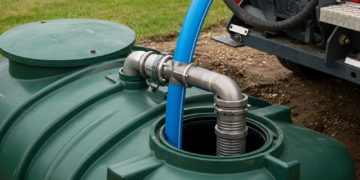ADSL, standard fibre and full fibre are three ways of getting broadband into your home. Each are different set-ups in infrastructure. They ultimately describe how much of the journey (from the exchange to your router) is done over old copper phone lines (bad) versus modern fibre-optic cable (good). This is the determining factor for not just download and upload speeds, but also downtime and uptime. If you’re comparing deals, it really helps to understand what’s going on “under the pavement” before you click on the best full fibre broadband offers.
What is ADSL?
ADSL (Asymmetric Digital Subscriber Line) is the oldest of the three. It runs entirely over the traditional copper telephone network. Copper might have been fine back in the day for carrying voice calls, but it’s not sufficient for high-speed data over distance.
- Typical download speeds of 8–20 Mbps
- Upload speeds are 1 Mbps or less
- Higher latency than fibre
- The further you are from the exchange, the worse it gets
For light use, like checking email and shopping, ADSL can just about cope. But it may go down in bad weather.
What is standard fibre (FTTC)?
Fibre broadband is essentially Fibre to the Cabinet. This is where fibre runs from the telephone exchange to a green street cabinet near your home – that part is fast. But from the cabinet to your property, it switches back to the old copper phone line. So, it’s a hybrid.
- Download speeds of around 30–80 Mbps
- Upload speeds around 5–20 Mbps
- Still affected by distance, but from the cabinet (not the exchange).
This is a big step up from ADSL. It’s often fine for home entertainment, like two devices streaming content, or gaming. Ping won’t be amazing, and it can still drop at peak times, but it’s often good enough for some families.
What is full fibre (FTTP)?
Full fibre is what people mean by Fibre to the Premises. This replaces that last copper stretch entirely with fibre-optic cable running directly into your home.
- Download speeds of up to 1 Gbps+ (multi-gigabit in some areas)
- Upload speeds: much closer to download speeds on many packages
- Lower latency and far more stable, which is great for gaming and remote work
- Not distance-sensitive in the same way
Full fibre isn’t just “a bit faster”, it’s several orders of magnitude faster. But beyond speed, it’s the reliability which makes it vital for those who want minimal downtime and low latency.
So which should you choose?
- Forget about ADSL unless there’s simply no other option or your usage is extremely light.
- Standard fibre is sufficient for a typical household, but there will be hiccups, less-than-perfect ping, some buffering, and often some downtime.
- Full fibre is suited to serious gamers, 4K streamers and/or remote workers.
In the UK, full fibre coverage is becoming ubiquitous. It may seem like a choice today, but soon, it will only be full fibre. By getting this last-mile fibre installed to your door, you will be set up for the future, which increasingly demands more bandwidth. While you may watch satellite TV today, you’re almost certainly going to stream TV over your broadband in the near future, as seen with Amazon Prime taking on football games.










































































